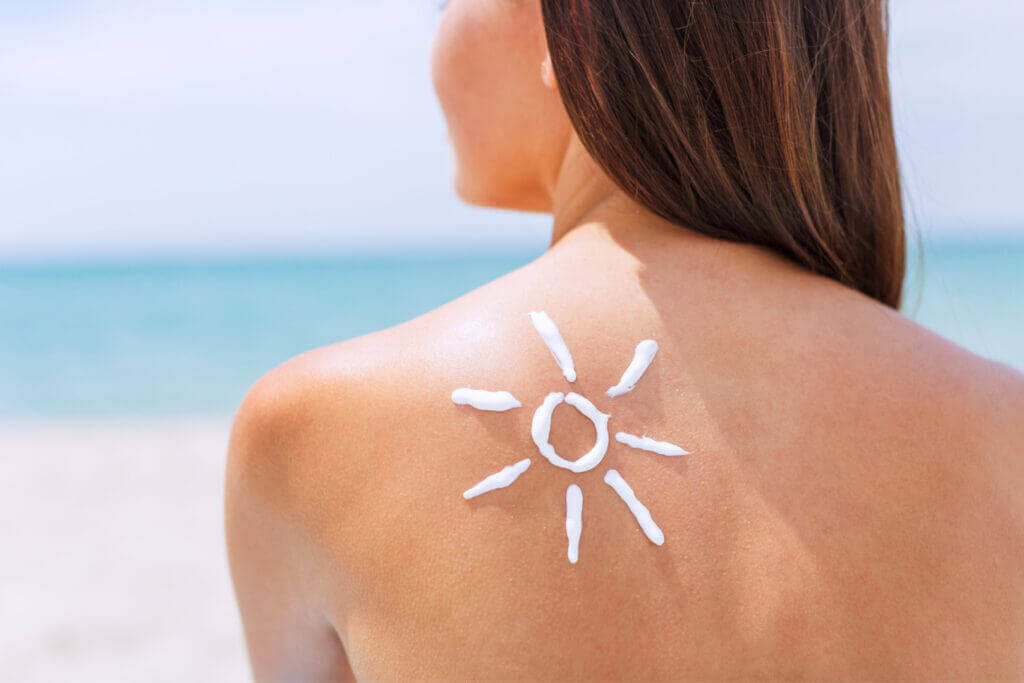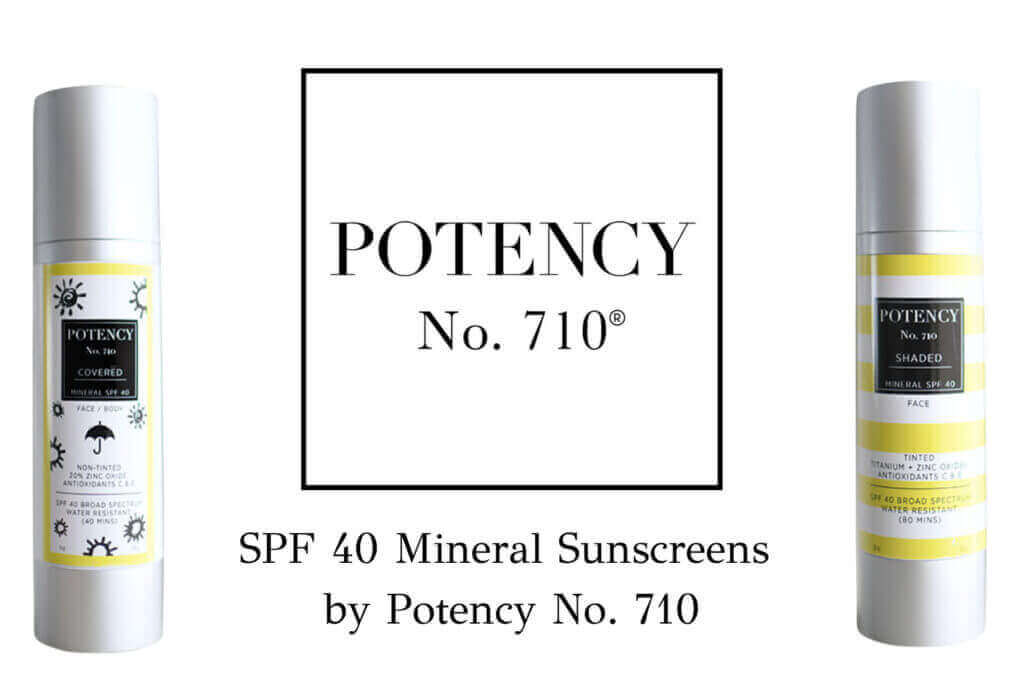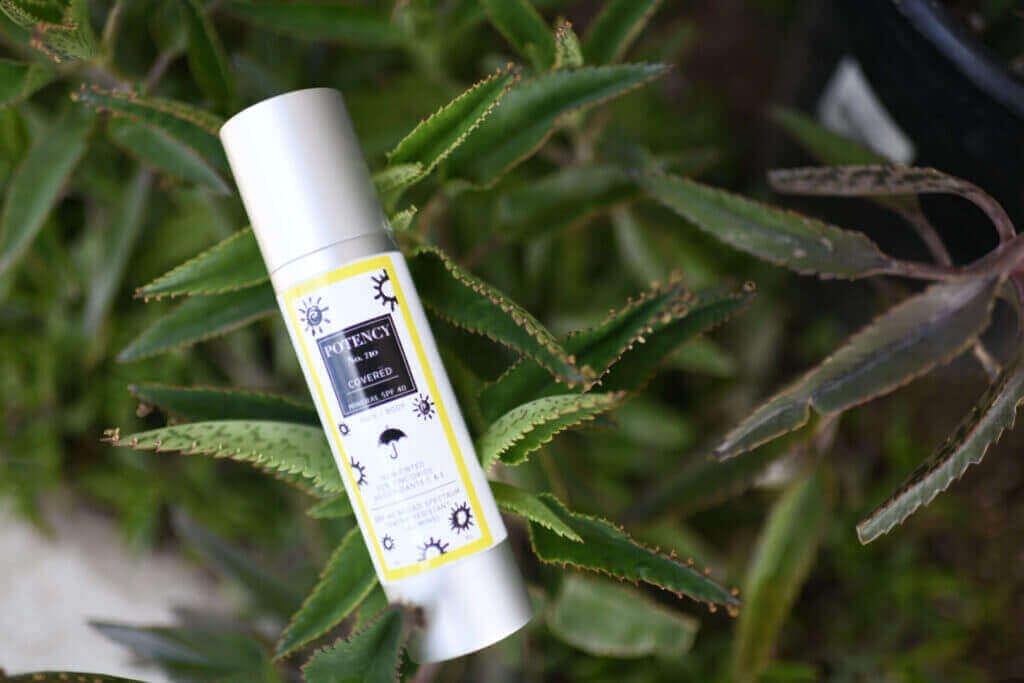
Arnica: The Luxurious Elixir for Skin and Muscle Majesty
In the realm of nature-powered skincare, Arnica emerges as a beacon of healing and rejuvenation. Known scientifically as Arnica Montana,
We’ve all been the victim of UV rays and their harm at least once. I’m sure you remember the burning, the itching, the peeling. Some of us have learned our lesson and now apply SPF protection before heading out into the sun. However, have you ever thought about the fact that SPF products could actually be causing damage to not only your skin but your overall health? Unfortunately, like many products on the market today, sunscreen often comes with a long list of unknown risks. From chemical additives to limited protection, let’s explore the dangers of traditional chemical sunscreen options and why mineral sunscreens are a safer, more effective SPF solution for the entire family!
According to the Environmental Working Group (EWG), in 2019, the FDA proposed updates to sunscreen regulations. Shortly after, the European Commission published “preliminary opinions on the safety of three organic UV filters, oxybenzone, homosalate, and octocrylene,” and they were quite concerning. The EC found that homosalate and oxybenzone were not safe in the concentrations they were commonly being utilized in. At that time, the European Commission recommended that the oxybenzone concentration be limited to 2.2% and limits on homosalate be placed at 1.4%.
What’s scary is that the EWG also reports that “U.S. sunscreen manufacturers are legally allowed to use these two chemicals at concentrations up to 6% and 15%, respectively, and hundreds of sunscreens manufactured in the U.S. use them at concentrations that far exceed the European Commission’s recommendations.”
These chemicals have the ability to disrupt hormone production, may potentially cause cancer, and have been linked to reproductive and developmental harm. Unfortunately, these aren’t the only risks that come with many sunscreens on the market today.

The Environmental Working Group (EWG) also reports that when the FDA reviewed sunscreen safety and proposed updates to regulations, “it found that only two (UV filtering) ingredients, zinc oxide and titanium dioxide, could be classified as safe and effective, based on the currently available information.”
These ingredients are the base of mineral sunscreens, including the Covered and Shaded SPF options from Potency No. 710!
So just what is a mineral sunscreen? Simple. These SPF options rely on nature’s own minerals (zinc oxide/titanium dioxide) to filter the harmful UV rays that we are exposed to instead of chemicals such as oxybenzone and homosalate. Mineral sunscreens also often include way fewer ingredients in comparison to common SPF options you may pick up at your local department store or pharmacy. Now that you are familiar with what a mineral sunscreen is let’s take a closer look at the benefits of choosing a mineral SPF option vs. a chemical sunscreen.

Mineral sunscreens rely on the power of minerals to protect your skin from the harmful effects of UV radiation and are free of harmful chemical additives such as oxybenzone, homosalate, octisalate, octocrylene, and avobenzone, to name a few.
“Oxybenzone is an endocrine-disrupting chemical and can pose major risks to reproductive systems as well as cause endometriosis. This chemical has also been shown to increase the risk of hormone-related cancers in both women and men as well as linked to male infertility and low sperm count.” – Medium
Not only are the chemicals mentioned above harmful to our skin and overall health, but they are also damaging to our environment and, in particular, the coral reefs and ecosystems that depend on them. Mineral sunscreens do not present this risk to the environment, making them not only a safer choice for you and your family but also a safer and healthier choice for Mother Earth!
“Places such as Australia and Hawaii have taken steps to ban the use of sunscreen products that contain oxybenzone. They have chosen to ban the use of these products due to the environmental hazards that oxybenzone presents for our coral reefs. Exposure to oxybenzone has been proven to increase the bleaching of coral reefs at an exponential rate. Additionally, this compound is known to be toxic to much of the aquatic life that lives in these reefs and the ocean as a whole.” – Medium
Chemical sunscreen UV filtering ingredients are only effective in protecting the outermost layers of skin from UVB radiation. UVB waves are what cause sunburns and damage the superficial layers of skin. Mineral sunscreens, however, that include zinc oxide and titanium dioxide also provide protection against UVA radiation waves providing full-spectrum protection from the harms of UV rays.

Mineral sunscreens are less likely to cause acne flareups as they are free from harmful chemicals that are known to cause acne flareups, such as the ones listed above. Not only are mineral sunscreens free of chemicals that irritate acne, but they also contain acne-fighting ingredients such as zinc oxide. Chemical UV filtering ingredients absorb into the skin, presenting a higher risk for irritation and acne flareups, whereas the UV filtering ingredients in mineral sunscreens sit on top of the skin, providing protection without penetrating the skin.
According to Hadley King, M.D., a board-certified dermatologist in New York City, “Avobenzones, benzophenones, oxyphenones, methoxycinnamate and para-aminobenzoic acid (PABA) are all common chemical sunscreen ingredients that can cause pimples in sensitive, acne-prone skin.”
The chemical ingredients within many common sunscreens are known to cause allergic skin reactions. In 2014, the American Contact Dermatitis Society named oxybenzone as their “Allergen of the Year” as it was found to be one of the biggest triggers of allergic skin reactions. Mineral sunscreens are chemical-free and non-irritating for most skin types, and safe for all ages.
In fact, not only are mineral sunscreens non-irritating and safe for all ages, but the basis of their effectiveness comes from ingredients (zinc oxide and titanium dioxide) that also offer benefits to the skin. Titanium dioxide has been shown to fight back against oxidative stress to the skin, and zinc oxide has been shown to prevent bacterial infection, treat acne, control excess oil, and improve healing of the skin, in addition to offering protection from the sun.

Here at Potency No. 710, we encourage skin protection powered by nature so naturally; in addition to our renowned Gold Serum, Filthy Face cleanser, potent CBD charcoal Future Face mask, and our luxury CBD+CBG full body moisturizer, we also offer two mineral sunscreen SPF options for potent earth powered protection from the sun.

The Shaded mineral sunscreen is designed to prevent pigmentation and premature aging; this groundbreaking formula has a soft matte tinted finish that can easily replace powder or foundation. It offers SPF40 protection and is free of preservatives, chemical sunscreen filters, oils, dyes, and fragrances, making it gentle enough for the most sensitive skin. Key ingredients in Potency No. 710’s Shaded tinted mineral SPF 40 sunscreen include titanium dioxide, zinc oxide, iron oxide, and antioxidants C&E.

Whether you’re beach-bound or running ‘round town, Covered Non-Tinted Sunscreen is the key to 24/7 sun protection. Our groundbreaking non-tinted SPF40 sunscreen is invisible on even the darkest skin tones making it perfect for layering under makeup. Moisturizing, calming, and gentle enough for little ones, it’s free of icky stuff like chemical sunscreen filters, dyes, fragrances, oils, and preservatives. Key ingredients in Potency No. 710’s Covered non-tinted mineral SPF 40 sunscreen include Zinc Oxide and antioxidants C&E.
We hope that you find this article educational and that it helps you make the safer choice when it comes to sun protection for you and your loved ones. Please share this information with others so that they can be aware of the dangers of chemical sunscreens and why they should instead choose to use a nature powered mineral sunscreen.

In the realm of nature-powered skincare, Arnica emerges as a beacon of healing and rejuvenation. Known scientifically as Arnica Montana,

Epsom salt, or magnesium sulfate heptahydrate, has been a staple in households and spas alike for centuries. Known for its

If you have ever received one of the infamous golden packages from Potency No. 710 it is likely that you

For centuries, the sun-kissed Italian orchards have yielded a skincare treasure: the bergamot tree. This citrus gem, with its elegant

When many people think about charcoal, they think of hot summer days and BBQs! However, there is a different form

Before we dive into the nitty-gritty of natural and synthetic fragrances, consider this. Every fragrance in your skincare is either
Disclaimer: The content on this site is for informational purposes only and is not intended as medical advice, diagnosis, or treatment. Statements and products have not been evaluated or approved by the FDA and are not intended to diagnose, treat, cure, or prevent any disease. You must be 21 years or older to make a purchase. Always consult a qualified healthcare professional before making health-related decisions.